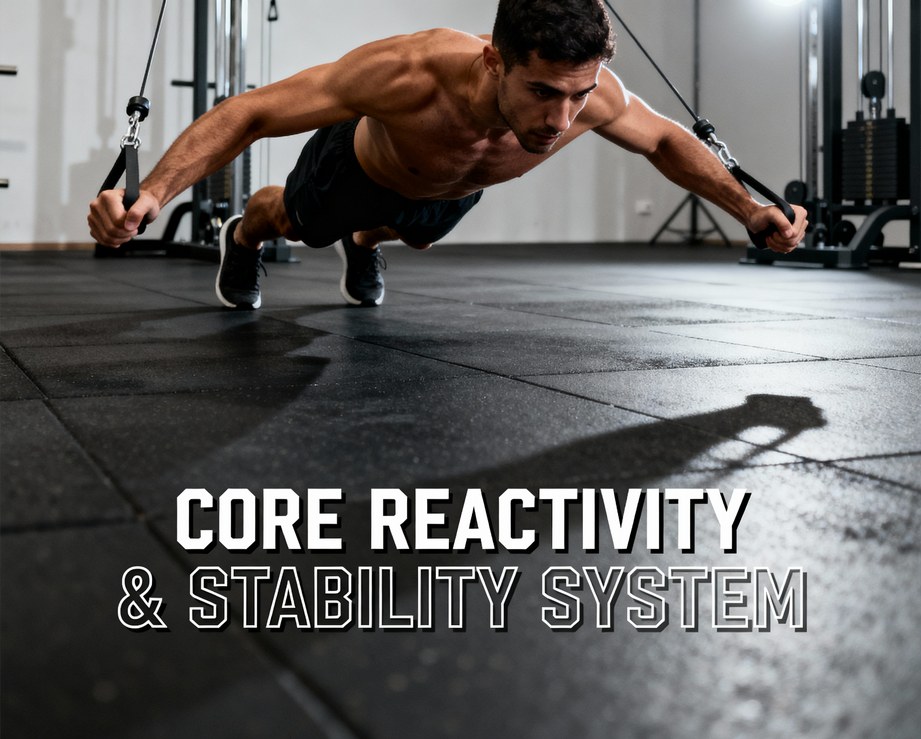
Core reactivity and stability are fundamental to efficient force transfer, movement control, and injury prevention.
The Core Reactivity & Stability System develops the neuromuscular coordination and trunk stiffness required for athletic performance across all planes of motion. Each session emphasizes controlled bracing, anti-rotation, and reactive stabilization under dynamic load, integrating the hips, spine, and shoulders to improve movement economy and performance efficiency.
Structured progression from foundational stabilization to dynamic, reactive control
Anti-rotation, anti-extension, and perturbation-based exercises for enhanced trunk stiffness
Evidence-based methods derived from NSCA, NASM, and current sports performance research
Integration of postural alignment, breathing mechanics, and unilateral stability
Application toward improved power transfer, injury reduction, and sport-specific movement efficiency
Three levels · two workouts per level (1–2 beginner · 3–4 intermediate · 5–6 advanced)
Tip: Click a workout title to expand/collapse.
All sections start collapsed by default. Train 2×/week with 48–72 h between sessions.
Safety: Maintain neutral spine and quiet ribs. Stop a set when alignment slips or breath control breaks down.